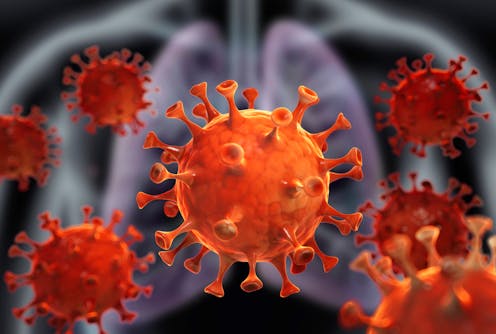4 unusual things we've learned about the coronavirus since the start of the pandemic
- Written by Sanjaya Senanayake, Associate Professor of Medicine, Infectious Diseases Physician, Australian National University

It is now almost six months since the world became aware of COVID-19, and almost four months since the World Health Organisation declared a pandemic.
As the number of people infected with the SARS-CoV-2 coronavirus grows, so does our knowledge of how it spreads, how it affects the body, and the range of symptoms it causes.
Here are some of the unusual things we’ve learned about the coronavirus along the way.
1. It affects how your blood clots
Many inflammatory diseases, including infections, are associated with an increased risk of developing blood clots. However, COVID-19 is more strongly associated with blood clots than many other infections.
If blood clots are large enough, they can block the flow of blood through a blood vessel. This in turn leads to the part of the body the blood vessel supplies being starved of oxygen.
If this happens in a coronary artery, which supplies blood to your heart, it can cause a heart attack. In the lungs, it can cause a pulmonary embolism. In the brain, it can cause a stroke, which we have seen even in young people with COVID-19 but no other risk factors.
Read more: People with coronavirus are at risk of blood clots and strokes. Here's what we know so far
Critically ill COVID-19 patients in intensive care units (ICU) are particularly at risk of blood clots.
One study found 49% of patients were affected, mainly with clots to the lungs. Other studies found 20-30% of critically ill COVID-19 patients had blood clots.
These rates are much higher than we’d expect to see in patients admitted to ICU for other reasons.
Worryingly, clots occur in COVID-19 patients despite using standard preventative measures such as blood-thinning drugs.
2. You can lose your sense of smell
We now know COVID-19, like other viral infections, can lead to anosmia, or losing your sense of smell.
In one study, it affected about about 5% of patients in hospital with COVID-19. But some people with only very mild disease say they they’ve suddenly lost their smell, before regaining it.
Anosmia has now been added to the list of possible COVID-19 symptoms.
Read more: Coronavirus might cause loss of smell, or anosmia. But it probably won't be permanent
Anyone who’s had a regular cold knows nasal congestion can affect your sense of smell. But COVID-19 is different. People can lose their smell without a runny or blocked nose.
Perhaps the virus latches onto receptors in the lining of the nose before entering the cells. We know these ACE2 receptors are how the virus enters other parts of the body, including the lungs.
Some people with COVID-19 who lose their sense of smell also report a reduction or loss of their sense of taste.
3. It can trigger serious inflammatory disease in kids
Another unusual feature is how little COVID-19 appears to have affected children, compared with many other respiratory infections.
However, doctors in Europe and the UK, who have seen larger numbers of COVID-19 in children, have noticed an unusual but serious inflammatory condition in children with the virus. This is known as “multisystem inflammatory syndrome in children”, or MIS-C.
In studies from the UK, Italy and France, most of the children with this serious condition likely had COVID-19 in the past.
Symptoms vary. But the main ones include fever, rash and gut symptoms (vomiting, abdominal pain and diarrhoea). Some children develop heart complications.
These symptoms generally resemble other conditions such as Kawasaki disease and toxic shock syndrome.
Researchers think it’s not the virus itself that is responsible for MIS-C. Instead, they think it’s the body’s immune response to the virus, perhaps long after being infected.
4. It can travel from humans to animals and back again
At the start of the pandemic, we believed SARS-CoV-2 originated from animals before spreading into humans. However, we were unsure if the virus could travel back into animals, perhaps infecting our pets.
We now know humans can transmit COVID-19 to domestic or captive animals, such as dogs, cats and even tigers.
In the Netherlands, there have been outbreaks in animals at several mink farms. Researchers believe an infected worker introduced the virus to the farms. The mink developed viral pneumonia, which spread among the animals.
Sick mink then reportedly infected two people – the first documented case of animal-to-human transmission after the virus originated in China.
Read more: Can your pets get coronavirus, and can you catch it from them?
Authors: Sanjaya Senanayake, Associate Professor of Medicine, Infectious Diseases Physician, Australian National University



